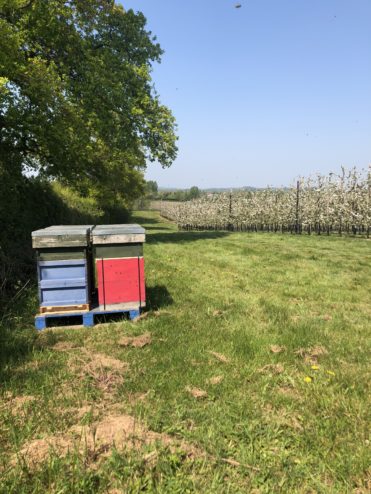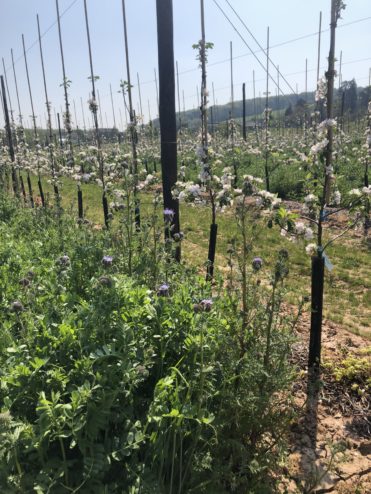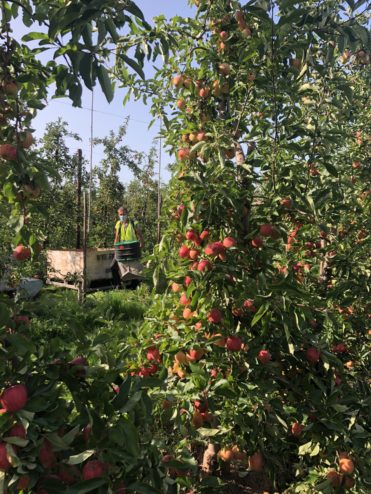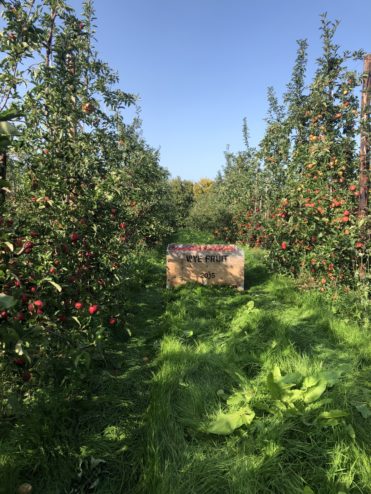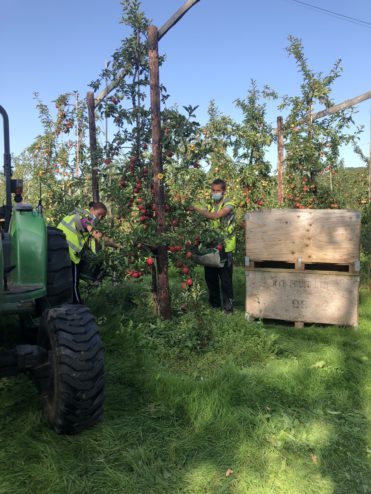Apple Harvest 2020
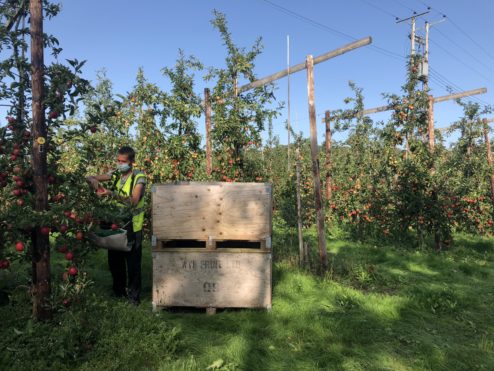

2020 was a difficult year for many reasons, but even without the challenges of Covid-19, the growing season was harder than normal.
Growing apples is not without it’s own quirks and issues – there are parts of the year in which we hold our breath because one freak weather activity can ruin a whole crop. Altitude and positioning can work in some orchard’s favour, or be the downfall…
2020 was looking promising. Though the winter wasn’t particularly cold, there were enough cold units for the trees to properly vernalise. Vernalisation is a really important process, essentially “resetting” the trees and allowing them to blossom and fruit the following year. Then came the blossom – April was a beautiful month and the stunning blossom on the trees and the orchards were full of the buzz of pollinators, followed by the blossom fall and the fruit set.
After the fruit set, we keep a close eye on the little “Fruitlets” and it is one of the most important parts of the apple growing year. 2020 did not let up with two very late frosts on 11th and 13th May, with the temperature dropping to -3.6 degrees celsius on our burgeoning fruitlets. DISASTER! A frost at this stage causes excess loss of fruit and also effects the growth of the apples – rings on the bottom of the fruit as it grows is a clear indicator of frost damage, and an otherwise wonderful crop is no longer suitable for supermarket contracts.
-
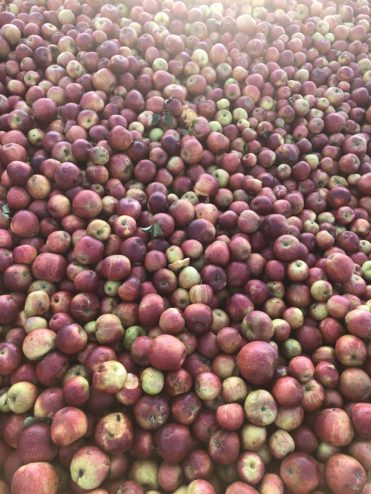
Red Windsor apples ready for juicing
We were able to mitigate losses on some orchards – some of our Red Windsor crop was picked for juicing, as was some of the lower lying Gala apples, with the higher orchards mostly unaffected by frost.
Then came Covid-19 -adding in an additional layer of planning into the mix. Whilst the fruit grew, we focussed on preparing the farm for social distanced fruit picking. Our pickers wore masks, were provided with hand sanitiser and worked in bubbles, at least two rows away from the next bubble. Our supervisors had to work between groups, maintaining distances, checking temperatures and ensuring a high hygiene level across farm machinery.
It was a tough year, at the end of the year, a large percentage of fruit has been left in the orchards. It is nice to know that we feed a wide variety of wildlife with what does remain in the orchards – stunning Fieldfare and more, including our neighbour’s labrador who has a penchant for a rotting apple we’re told!
In fact, the Field Fare have become somewhat of an attraction to local twitchers – the noise they all make when chattering in the trees is almost deafening before they simultaneously take flight to the next section of the orchard in search of more fruit.
2021 is on the horizon and the challenge starts again. Let’s hope for a better year all round.


